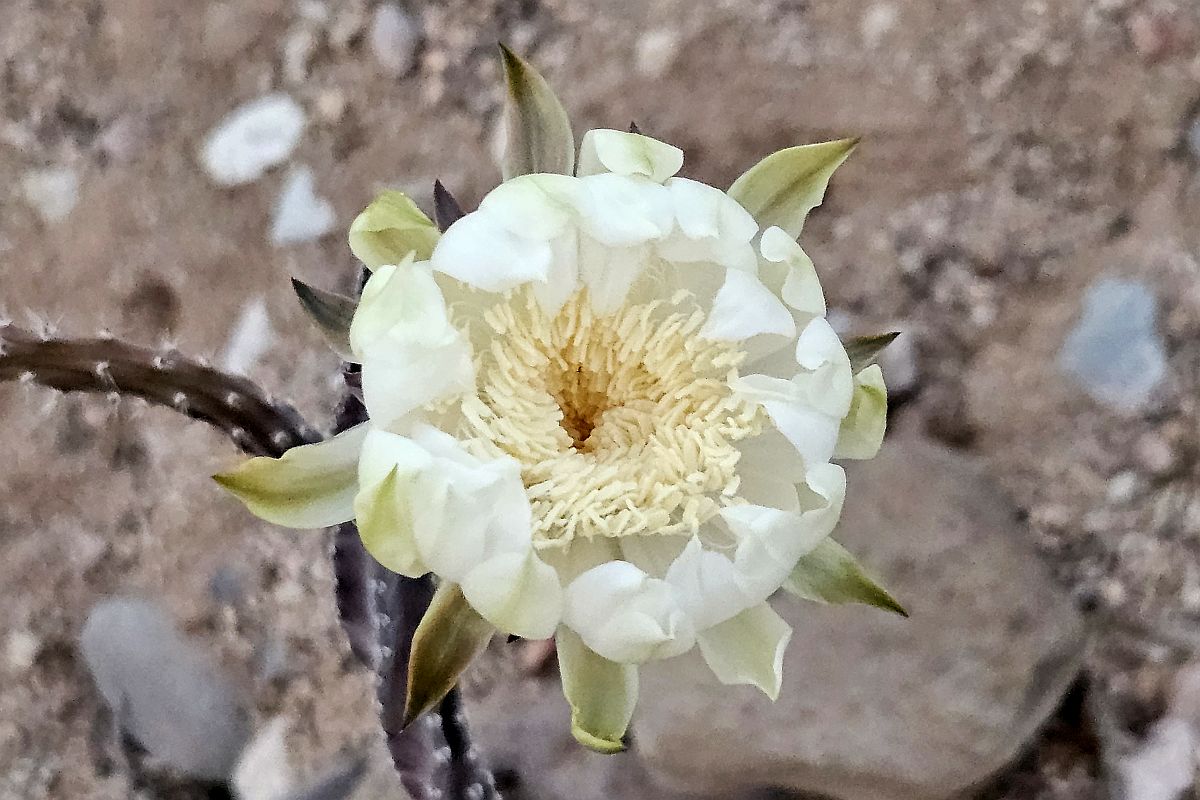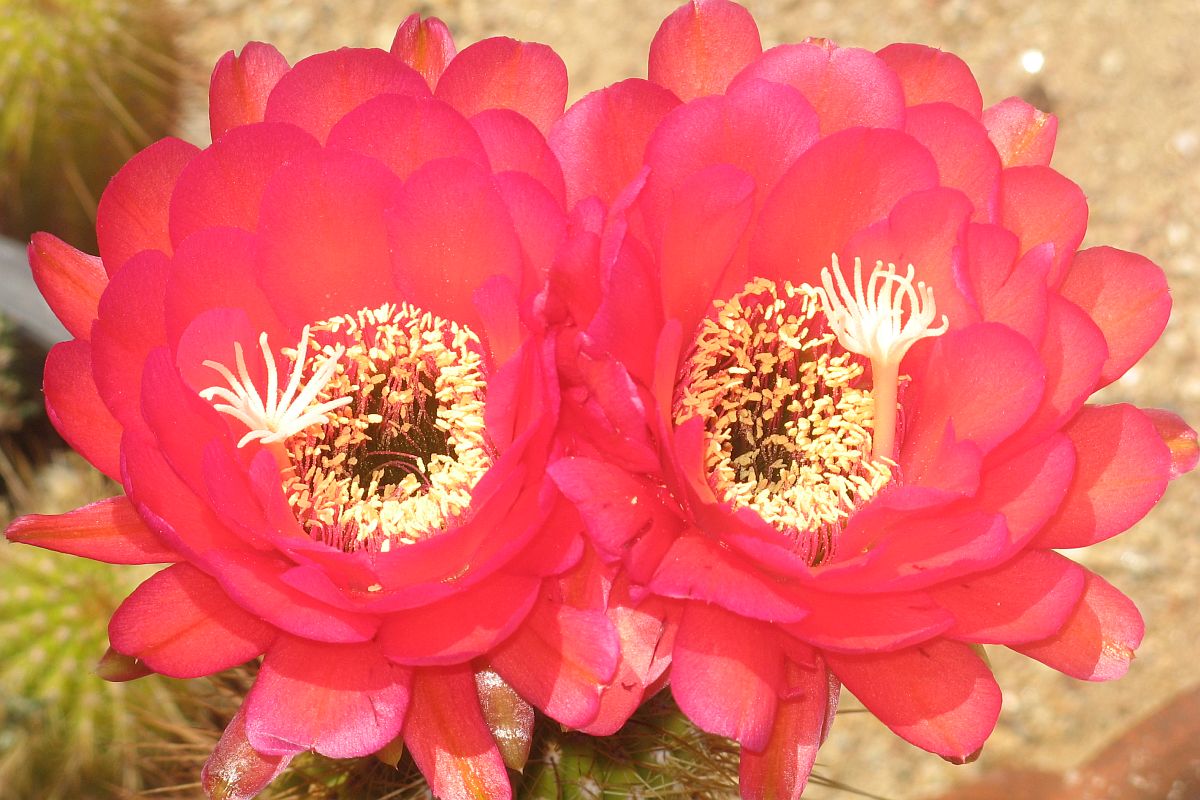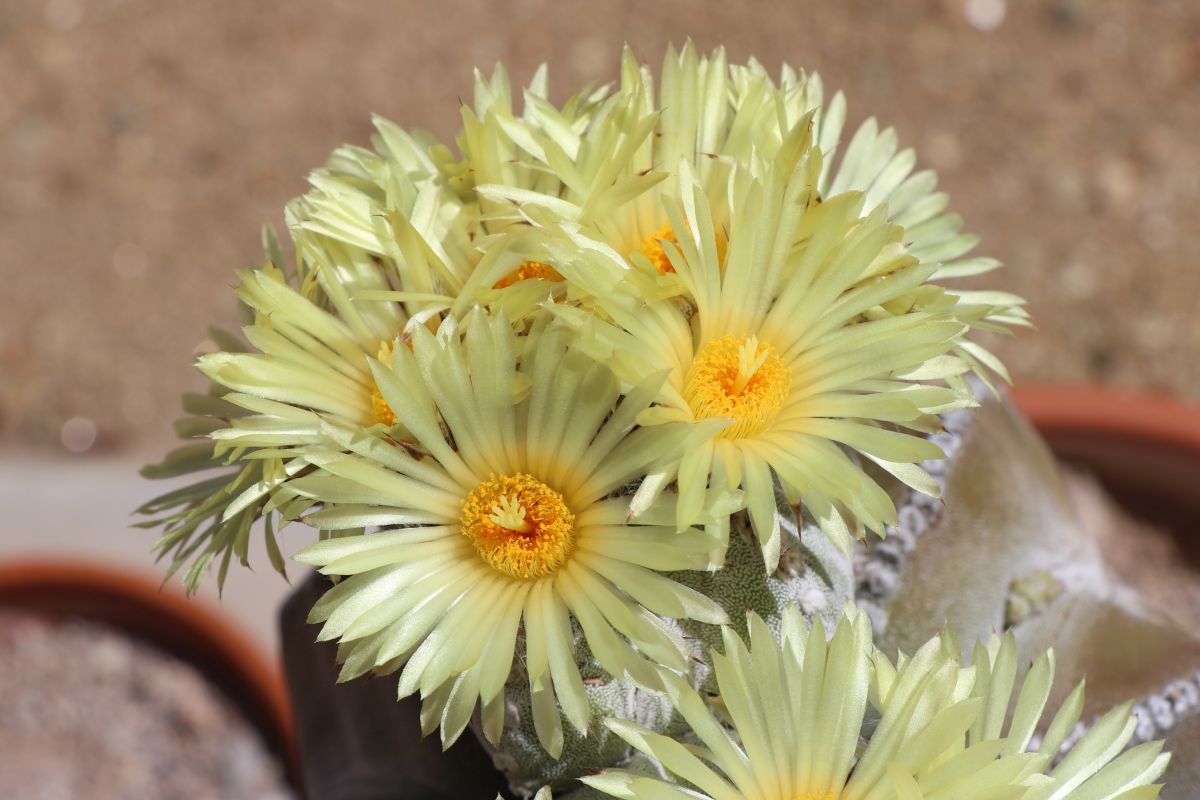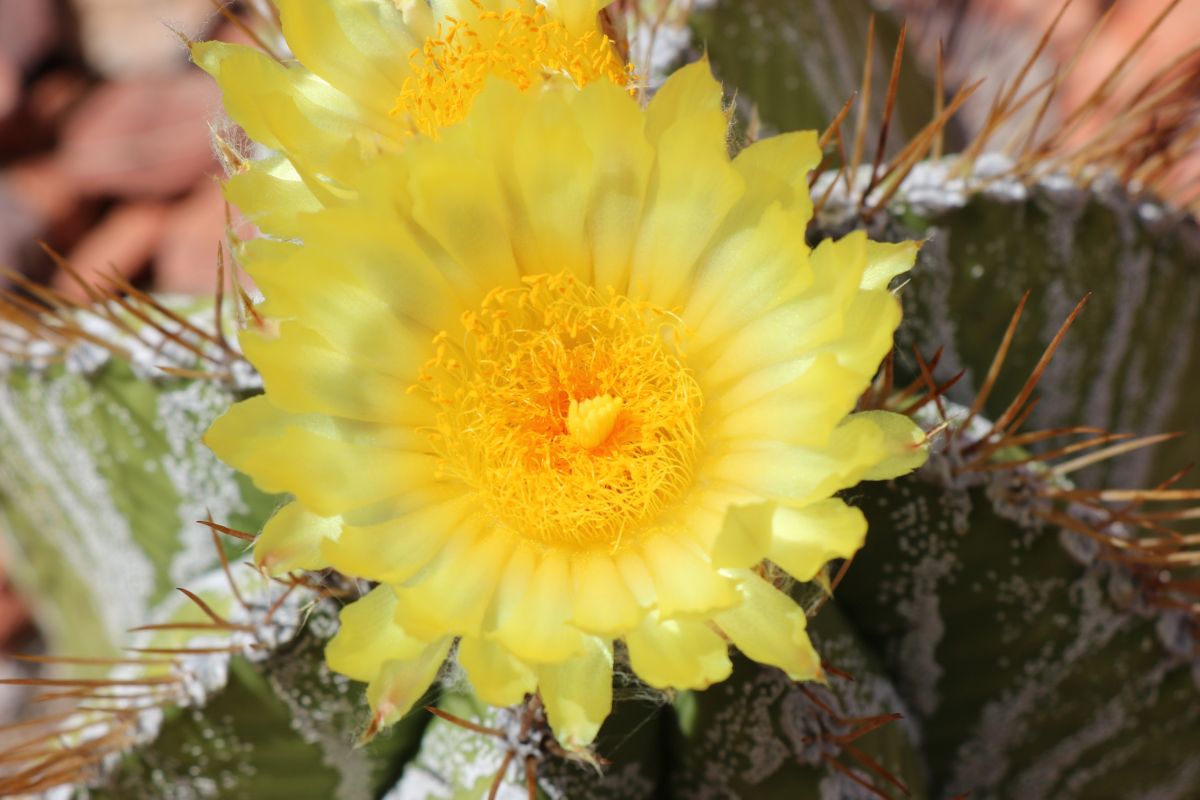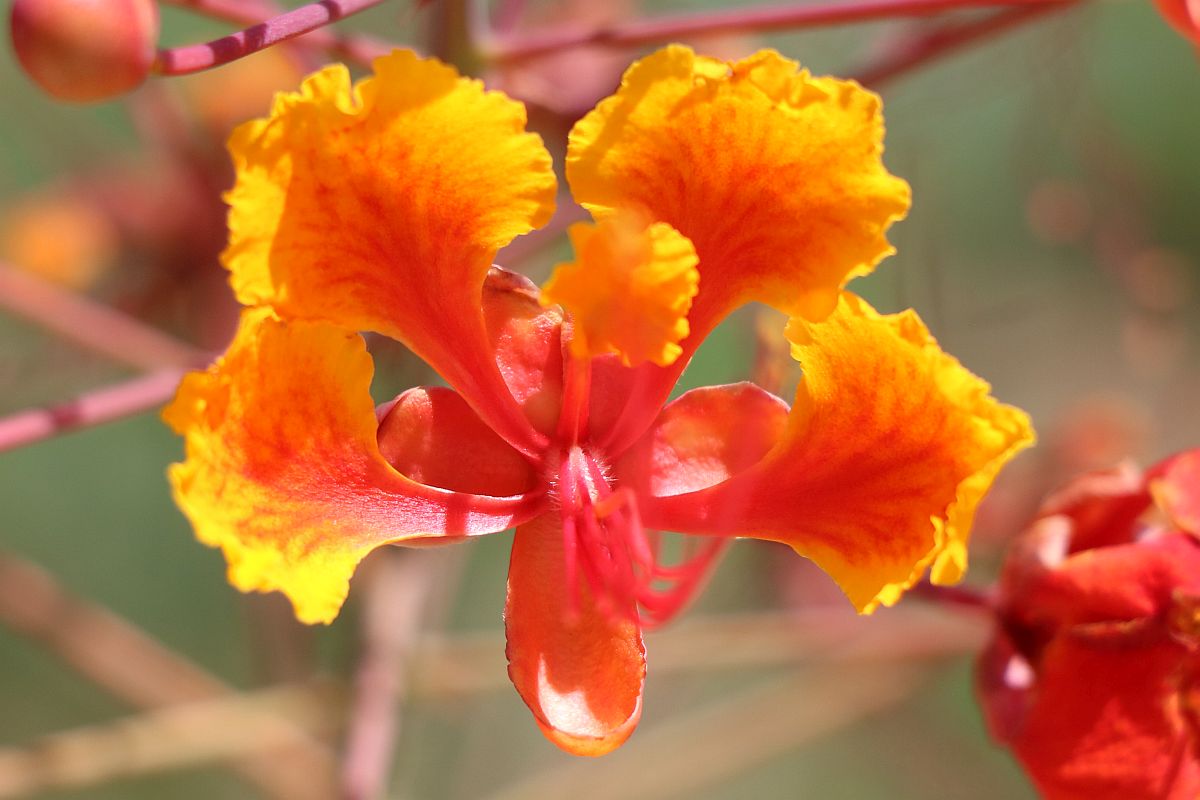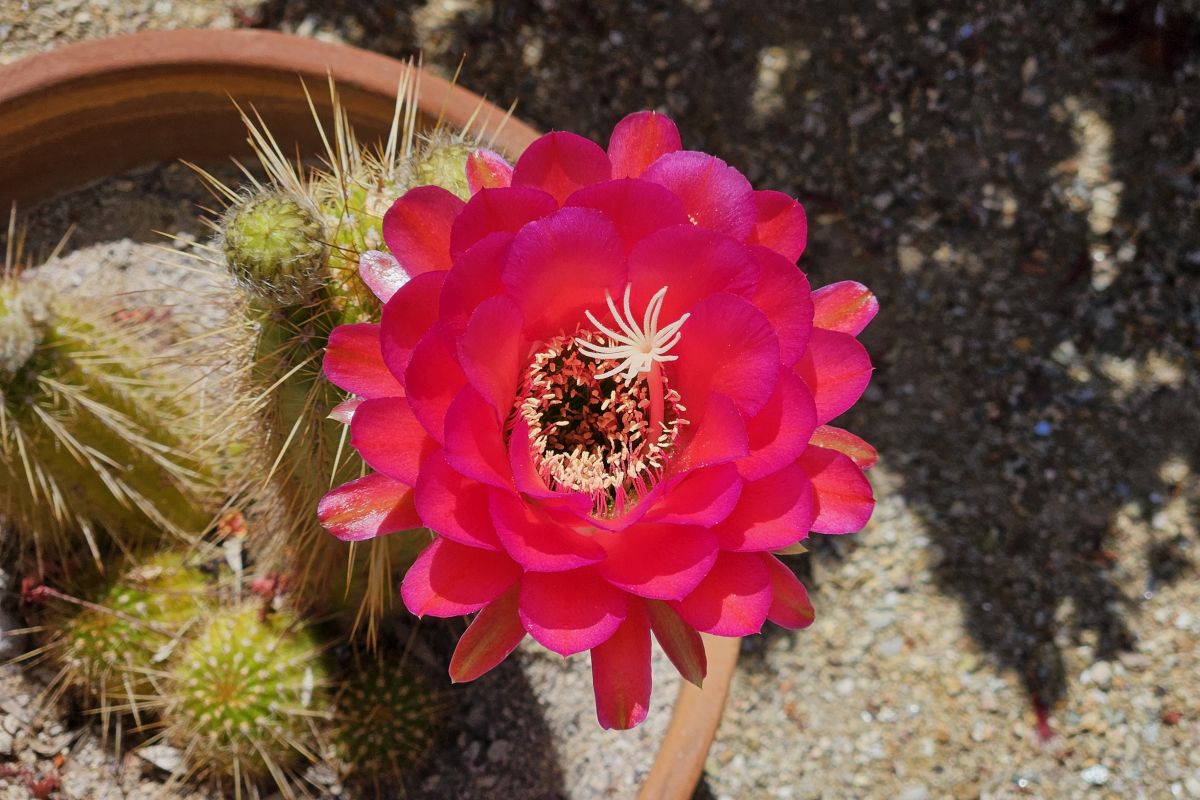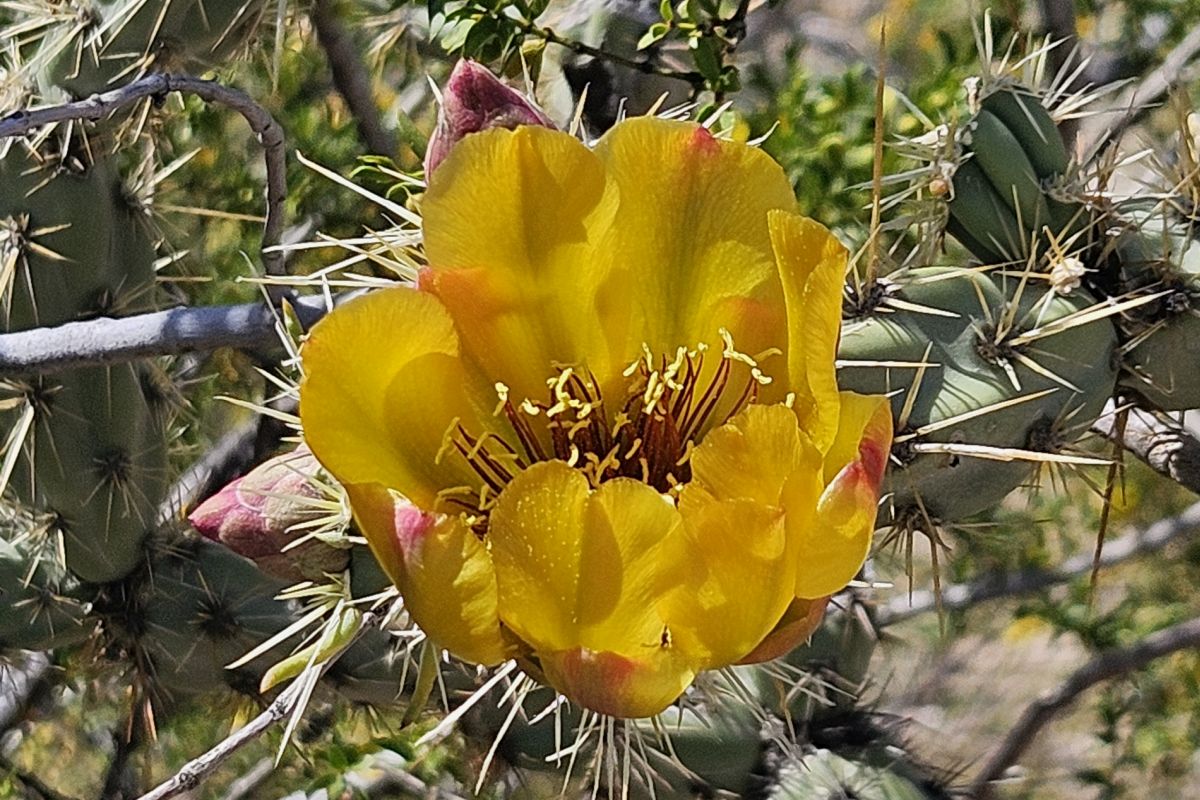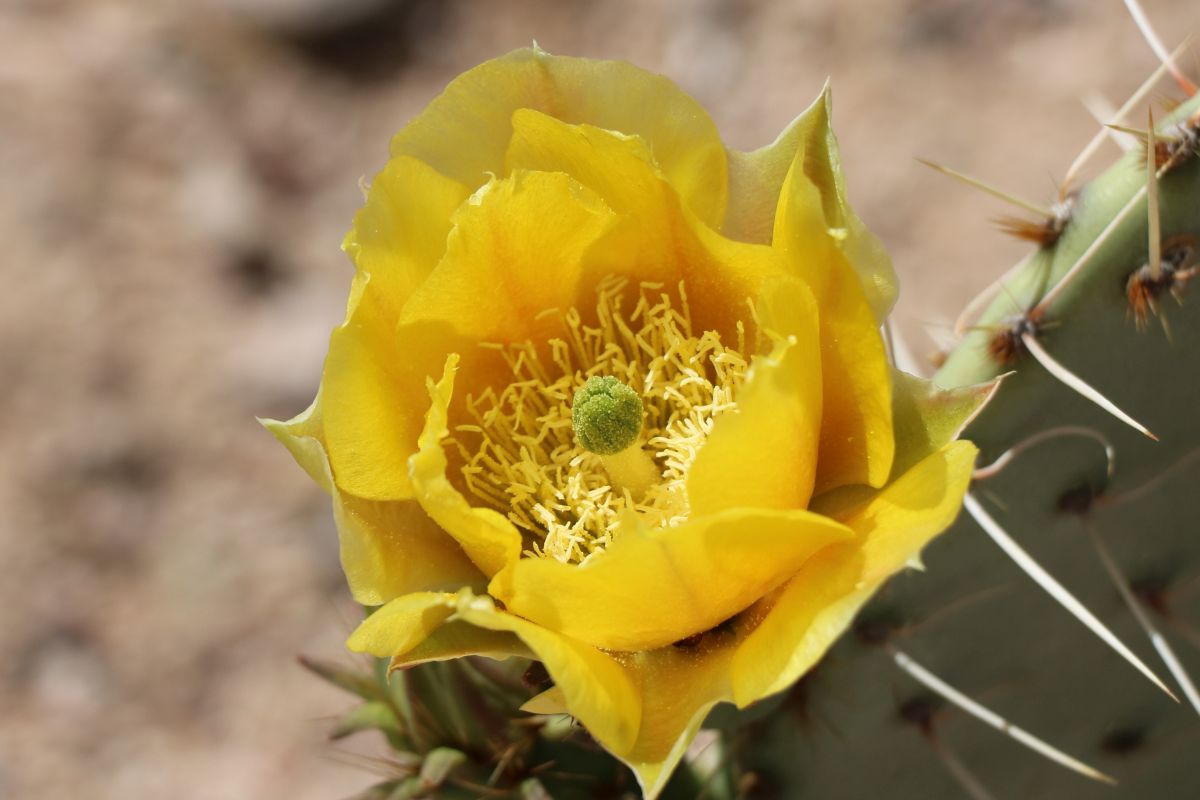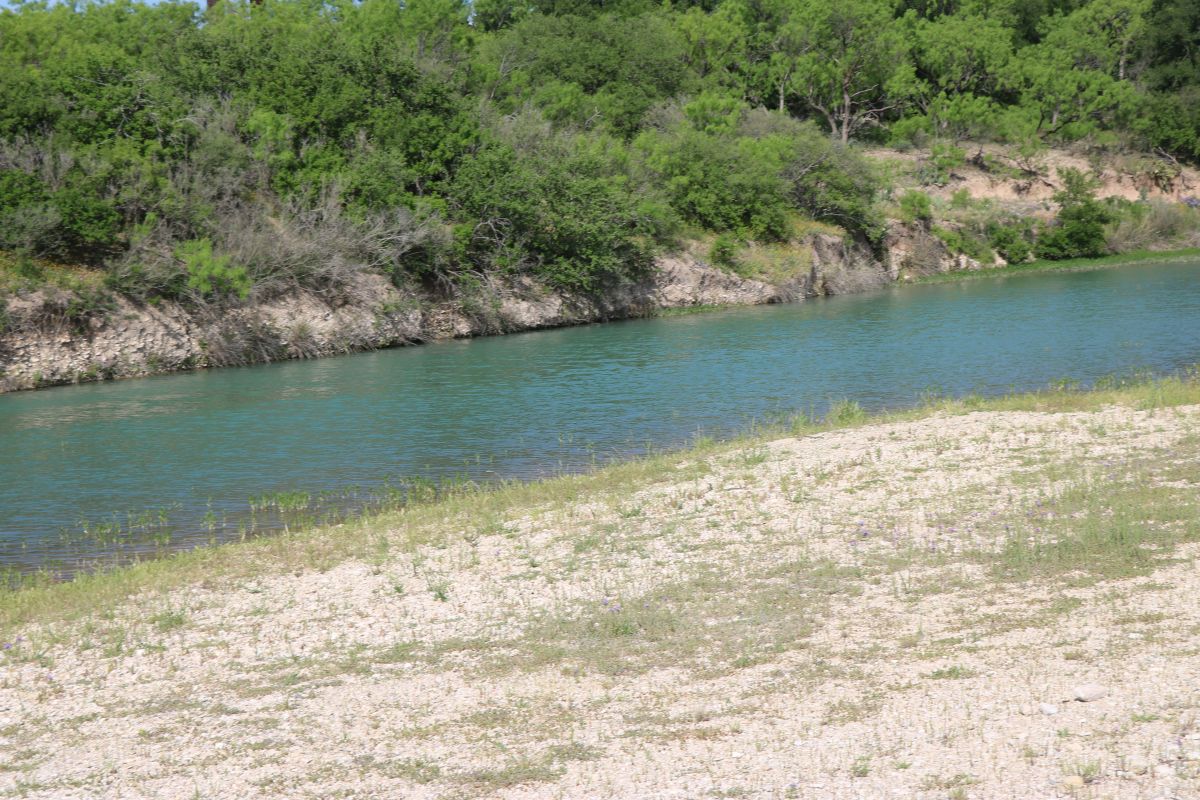July has always been a good month for desert cactus flowers opening. After only three days, this month gas been no disappointment. All the flowers shown below have opened on or since July first.
This first photo is of a peniocereusgreggii “Queen of the Night” flower, two of which opened up last night (July 2). They are short-lived like many cacti flowers and were mostly gone this morning. We were lucky to spot them last evening to get this photo.
These next beauties also opened overnight. They are “Cherry Red” (trichocereus) cactus flowers and look almost hot pink in the morning sun.
Our old reliable “Bishop’s Cap” cactus produces flowers many times during the year. We bought this cactus over 25 years ago in a three-inch plastic pot. These were open on the first of July.
The “Star Cactus” (Astrophytum) is also one of those that produce flowers several times a year. This flower also opened on July first.
Lastly, is our showy “Red Bird of Paradise” or “Pride of Barbados” shrub which will produce these brightly colored flowers from April through September. We have three shrubs in the courtyard.
That’s all for now. Click on any image above to view enlarged in a new window or tab.

